Making Dirty Tap Water Safe: A Real-Life Test for Plastic-Free Travel in El Salvador
This is part travel story, part product review. The story is about my years of frustrating experience with plastic pollution in Central America. The product review is about how I used two travel water bottles (the Grayl GeoPress, and the LARQ PurVis) to safely drink the tap water on my latest trip to El Salvador – proving that it can be done! So we might not need to buy all those plastic bottles, after all.
[Prefer video? There’s a link my short YouTube video about this below.]
It seems like such a small thing to shop for a purifying water bottle online, from the comfort of your own home – where you can probably drink the tap water safely. (Maybe you filter it for taste, but brushing your teeth with the water from your tap certainly won’t ruin your week, as it can in some countries.)
From home, a travel water bottle might even feel like an unnecessary expense – a bit of a luxury travel gadget. And the tech will sound so impressive – UV lights that sanitize! Filters that remove everything bad! – that you’ll feel 100% confident and trusting in this new way to travel without creating plastic waste.

But let me tell you, comparing those fancy travel water bottles online is entirely another thing from actually using them once you’ve arrived in a country known to have some of the worst tap water in the world.
That’s especially true if you, like me, have literally vomited your way across the border of said country recently enough to remember it clearly.
I wasn’t drinking the tap water on that last trip to El Salvador – God no. But at lunch earlier that day, in Nicaragua, I’d accepted some cherries from a woman who popped into the restaurant where I was eating to sell them. I must have eaten just one or two before I remembered that they probably hadn’t been washed in purified water.
But one or two cherries was enough to have me stopping to throw up throughout an entire travel day, including two Central American border crossings.
(Where I was actually able to skip waiting in two very long immigration lines under a very hot sun. My friends practically dragged me to the front of each line, where the officials looked at me like they were seeing the face of death before quickly stamping my passport. There’s always a silver lining.)


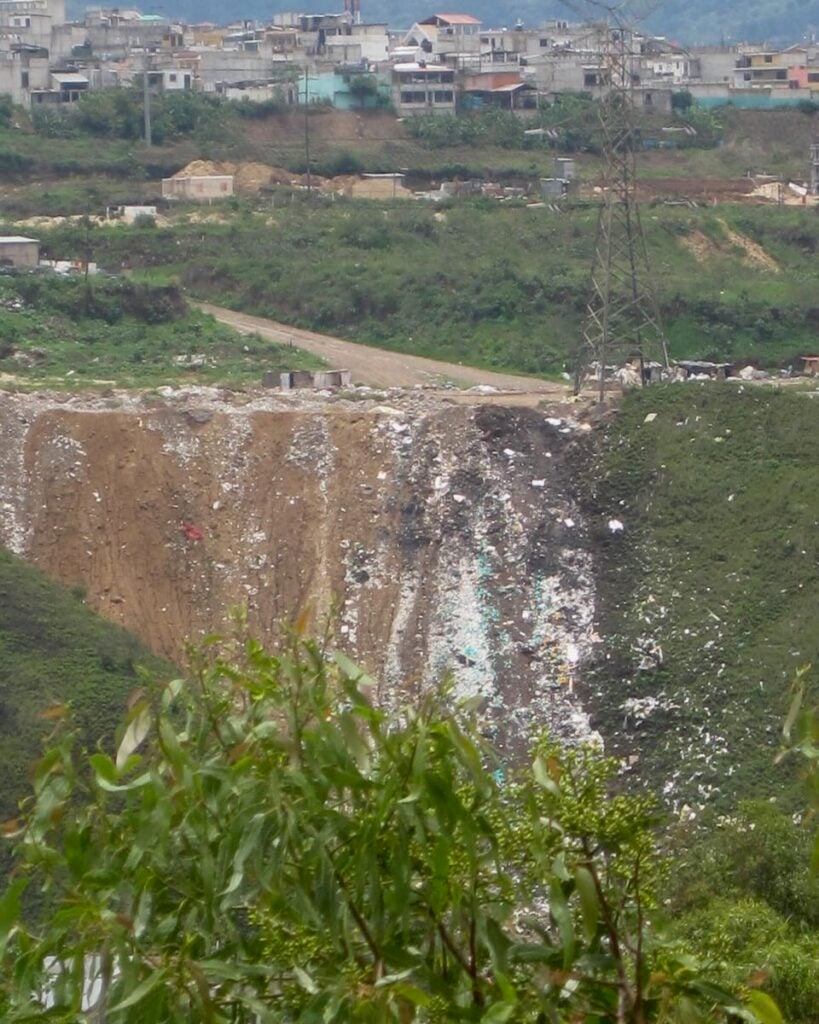
The backyard at the home of the family that hosted me, and a local dump – where garbage was thrown over a hill into the forest.
This is why there’s the travelers’ rule for food in Central America: If you can’t peel it, cook it or boil it, don’t eat or drink it.
Fresh salads? Nope. Ice in your drink? Rookie mistake. Fresh fruit rinsed in tap water, or cut fruit from a street vendor? Not. Even. Once.
Travel Tip: Any of these are likely fine in a decent hotel or restaurant with an international clientele. (None of which want a reputation for making people sick.) While local people have much more tolerance to local bacteria, it doesn’t take much to get tourists sick in Central America.
And if you do want ice in a restaurant, always ask if it was made with “agua purificada” (purified water). But before you even ask, consider the source.
And so it was that I lived through my second bout of Latin American food poisoning. (Montezuma’s revenge, travelers’ diarrhea, whatever you want to call it.)
If you’re lucky, it might just be a bit of a stomach ache (almost everyone will get a touch of one at some point on a trip to Central America, no matter how careful you’re being). But more often than not, it’ll have you in a bathroom praying for a speedy death for at least 24 hours.
My first experience with this was when I got e-coli in Guatemala. After a few initial days of puking and diarrhea, I recovered to the point where my stomach could keep down both mangoes and Corn Flakes. So I lived on those for two weeks of travel. Despite a local doctor’s visit, I didn’t get cured until I went home – much skinnier.
(Both the LARQ and Grayl have been independently tested and proven to remove e-coli, and many other gut-destroying bugs, from drinking water.)

But that border crossing after the poisoned cherries was 12 years ago. Surely I’m a better traveler now, with dozens of countries under my belt, most of them solo and unguided?
And in those years, I’ve also learned more than enough about the curse of plastic waste on nature and our climate to have sworn off plastic water bottles in even the most forgivable situations.
[Related: This is where I’m putting most of my budget for supporting climate action as a traveler.]

Still though, back in the present day, when I checked in to my hotel in San Salvador (tired from a long day of travel, and putting the finishing touches on a blog article on the plane) the two plastic bottles of safe, clean, purified drinking water on the night stand looked damn tempting. (And so innocent! It’s just one bottle, right? It’s only while I’m traveling…)
But I managed to resist the disposable temptation. (And convince Emanuele, my very skeptical husband, to resist, too.) Instead, I pulled out my Grayl bottle, to press an ultra-powdered activated carbon filter through my first batch of potentially toxic tap water.
(FYI, my Grayl bottle, the GeoPress, also comes in more subtle colors, if you’re trying to avoid the I-live-for-mountains look.)
Then I reached for my LARQ bottle, and poured the filtered water from my Grayl into it.
I pressed the button to activate the sanitizing UV-C light inside the LARQ’s lid. (A double tap started the three-minute “Adventure Mode,” as opposed to the normal thirty-second cycle.)
Here’s a video of the process:
[A quick favor – If you want to support our brand new YouTube channel, it would mean a lot to us if you click the SUBSCRIBE button here!]
In theory, either one of these treatments – the filtering Grayl or UV-sanitizing LARQ – should be enough to yield potable water from a tap in Central America (or anywhere in the world).
But it was beyond theory here. I was trying to enjoy a vacation, and I wasn’t about to start the trip with a painful illness if I could avoid it.
I’ve had both of my LARQ and Grayl bottles for more than two years now, and used them in lots of travels. The LARQ – which is slimmer, insulated and sleeker looking – is actually my go-to water bottle for every day.
But this is the first time since I bought the two bottles that I’ve been in a place where I definitely needed them. A place where, if you Google “can you drink the tap water in X” your screen lights up with a flashing danger sign.
El Salvador is certainly one of those places where you don’t dare to drink the tap water.
The country is in the midst of a severe water crisis. They have one of the most polluted water supplies in Latin America, and 1 in 10 people in El Salvador don’t have access to clean drinking water.
That’s all just one more reason why I didn’t want to contribute to the privatization (AKA bottling) of what should be a human right: Access to clean water. Instead, since I have the resources to make it happen, I decided to clean my own tap water in El Salvador.
Read on for some notes from my travel journal on how it went.

El Salvador Day 1: Semi-plastic-free drinking
Confession: On the way to the hotel from the airport, our friendly taxi driver, Felipe, offered to stop at a pupuseria that he knows so we could pick up dinner. (That’s a local kind of Salvadoran restaurant you definitely need to try! He offered because I asked.)
We did, and I bought five delicious pupusas to-go, stuffed with beans, cheese, and jalapeños. They were fabulous. But my water bottles were empty there, and I was tired and thirsty, and they didn’t have a tap on offer. So I also bought one large bottle of water to get us to the hotel, and through dinner.
Also, each pupusa was individually wrapped in plastic film. The homemade salsa and curtido (pickled vegetables) that are standard with pupusas each came in their own plastic baggies.
So I am not a saint of plastic-free living. But I am a believer in doing what we can, and doing better when we can.

Travel Tip: Central America is a great place to travel with your own reusable silverware!
The majority of small, local restaurants, where we ate every day in El Salvador, serve food with plastic forks. That means you can avoid a lot of waste by bringing our own, and just wiping them clean before putting them away.
It doesn’t have to be anything fancy! If you want to buy a set, this simple one is made of recycled (and recyclable) plastic. Or this one is aluminum and super light-weight.
But the reusable “cutlery” I use is below.
It was served with an airline meal several years ago, and I thought it was too good to throw away! It’s been in my purse ever since (with a few additions).
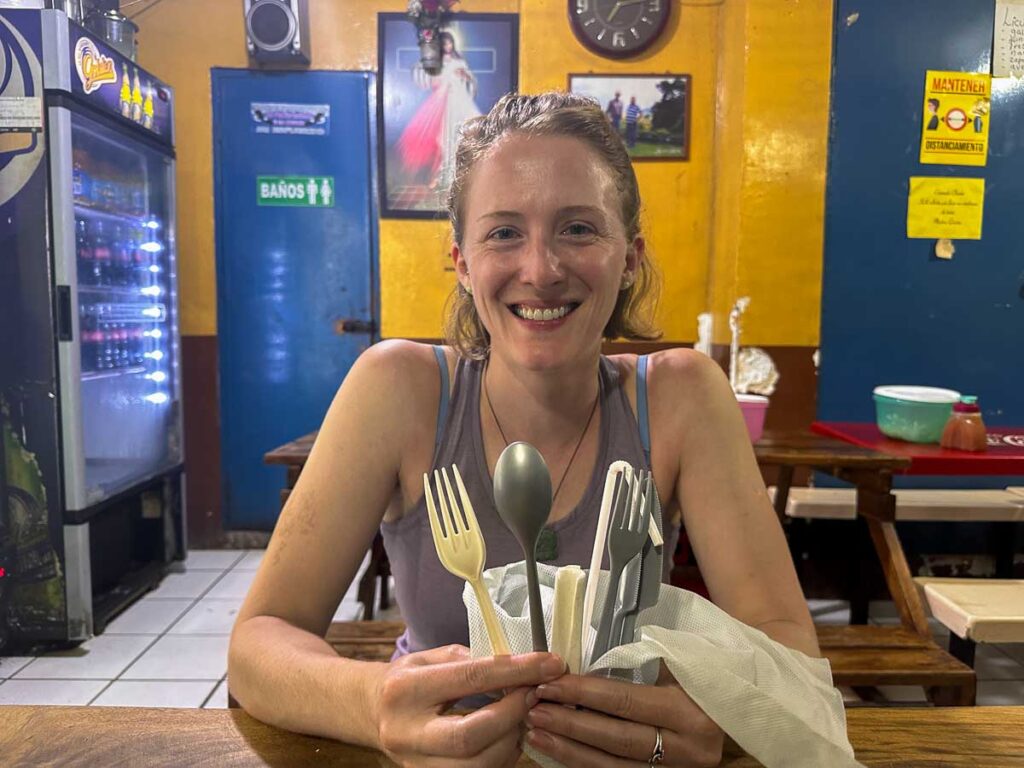
For more basic travel tips for Central America, stay tuned for another blog post coming up soon!
Before bed, after we finished that one plastic bottle of guaranteed-to-be-safe water, I started my process. First, I filled the Grayl from the tap, filtered the water, and then zapped it with UV light for three minutes in the LARQ.
We each nervously drank some, and went to bed with a prayer.
Day 2: Getting better!
We woke up and, after giving it some thought, decided we felt just fine! I was feeling a bit more confident, and started my filter + UV-C bottle process again, this time with conviction.
I refilled the plastic water bottle I’d bought the day before with our home-purified tap water, and we left to explore San Salvador. (With that extra bottle in our daypack to drink first, plus the insulated LARQ bottle to drink second, and the Grayl to refill the LARQ. Not a small load to carry, but it gets HOT in Central America. Don’t underestimate how much you need to hydrate, or you won’t feel good.)
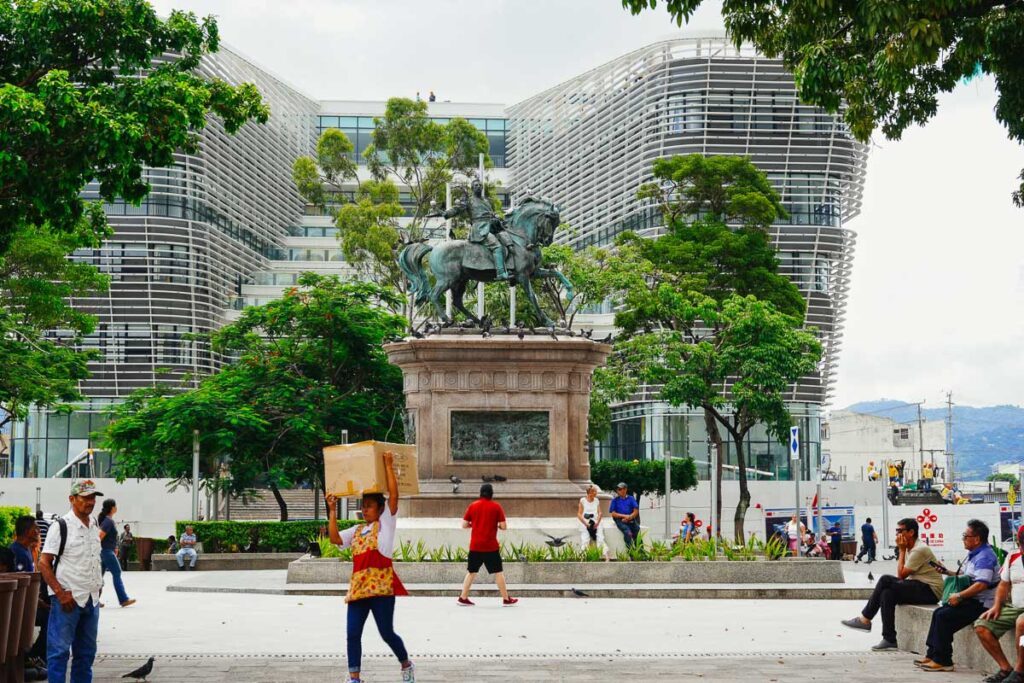
Day 3: … And the water actually tastes good, too.
It’s the end of Day 3, we realized it’s been 48 hours drinking our magic twice-purified water, and we’re feeling great. Fantastic! Knock on wood.
When we refill from any water faucet in San Salvador, it’s impossible not to notice the strong odor of chlorine in the water.
(That’s because ANDA, the national water company, chlorinates the water in the capital. Theoretically, that makes it potable – chlorine kills pathogens in water – but they haven’t necessarily removed heavy metals, microplastics, and other pollutants, which our Grayl filter bottle takes care of. And the chlorine also makes the unfiltered tap water taste terrible.)
Even my husband, Emanuele, volunteers that our water tastes amazingly good and… tasteless after my process.
I’m beaming with pride.
(And he’s from Italy, which is code for he’s very, very picky about every kind of food or drink, including water.)
Day 4: Less chlorine. Not cleaner water
We moved from San Salvador to the smaller city of Santa Ana today. Here, the water smells a lot less like germ-killing chlorine. I’m not sure if that’s a good thing or a bad thing. We’ll see.
[Related: My review of the Tortuga travel backpack I used for this trip, as I definitely wouldn’t recommend moving around El Salvador with a wheeled suitcase.]
The hostel where we’re staying, Velvet Hostal, also has pitchers of filtered water available for guests! (I forgot to snap a picture, but I swear it’s true.)
For the sake of science and this review, we kept using our two-bottle tap water system.
Day 5: A dose of plastic reality
Still drinking nothing but our homemade purified water, and still feeling totally fine. Success!
And when I see the overwhelming amount of garbage at roadside stops, I start to feel like it’s just wrong to come here from a wealthy, developed country – where we absolutely know better and can afford to do better – and contribute to this disgusting global problem.
It’s true the system we’re using isn’t cheap. (The LARQ and Grayl bottles together cost about $190.) But it’s a long-lasting system – I’ve had mine for two years, with no signs of either bottle slowing down.
And I do believe that if we can afford to travel, we can afford to take the actions that make us part of the solution, not the problem, whenever possible.

Day 6: Signs of hope in a very big mess
We hiked Santa Ana Volcano today, the highest volcano in El Salvador. Hiring a local guide is required, and ours, Kevin, kept stopping on the trail and saying, “You go ahead, I’ll be right back.” (He was 21 and apparently part mountain goat, so it took him no time at all to catch us, no matter the head start.)
It was only on the descent that I realized he was noticing plastic water bottles and other garbage off the trail, and stopping to put it in his backpack. (I often do the same, and I had been impressed by how clean the trail seemed, as I’d hardly noticed any!)
He told us he, “wants to keep our mountain clean,” which just made my heart swell to hear.

Day 7: Don’t get too close.
Today, we drove our rental car around Lake Coatepeque – a lake inside a volcanic crater, which we could see from the Santa Ana volcano hike. I have to say, it was more beautiful from the view points above, where it looked like a turquoise jewel, than from the shores of the lake.
Up close, it was painfully obvious how polluted and full of plastic trash the water was.


(Also, the land around the lake is almost entirely privately owned, so you can’t drive or walk around it. It’s mostly a playground for the elite from San Salvador, with very few public access points. Still, it seems no one bothers picking up the trash.)
Day 8: Mayan history, local wisdom and… more plastic
We spent the morning spent on an excellent tour of Tazumal, a site in El Salvador where Mayan temples have been excavated. Afterwards, we had fried yuca for lunch across the street, and went to see a nearby cenote, or sinkhole filled with water.


Our guide said the cenote had been a landmark since Mayan times. (Even the word cenote itself comes from a Mayan language!)
We went, and even though I immediately noticed the garbage, the scene was lovely.
A local woman, maybe in her 70s or 80s, was sitting at a picnic table, eating her lunch and gazing at the pond. I commented to her that it was beautiful, and she responded without missing a beat:
“It used to be beautiful, but now they haven’t cleaned it. I used to swim here with my husband when I was younger, but now it’s disgusting.”
She wasn’t wrong. Except that the problem isn’t that anyone has stopped cleaning up garbage, it’s that they never started.
When she was young, there was hardly any single-use plastic packaging available in most of the world, let alone in El Salvador. Packaging used to be natural – banana leaves, rope, gourds, wood, cotton – and could be thrown back into the environment to decompose.
Now, even products that could just decompose naturally come wrapped in plastic.
Education about not littering only came to the US in the 1950s, along with the beginning of “disposable” packaging.
(There’s an interesting history to those old litterbug campaigns. Of course, they were necessary to get people to stop littering, but they basically follow the same game plan as recycling campaigns: Distract from the real problem, guilt trip, and greenwash.)
In many less wealthy nations, education about not throwing garbage just anywhere still hasn’t really been effective. (But that’s not the entire problem. More on this below.)
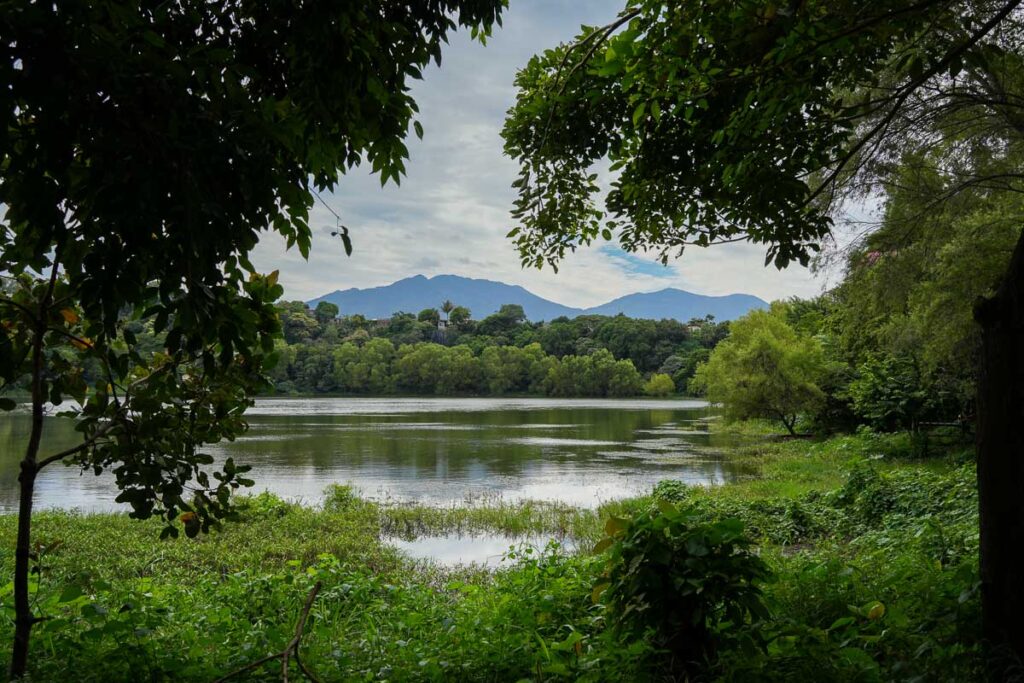
Day 9: A hot spring waterfall! (Unique in the world, but not-so-pristine.)
Today, we stopped at a very unique natural attraction called Malacatiupan, where a hot spring bubbles up into and around a waterfall.
It was gorgeous, but the amount of trash we saw everywhere was so overwhelming it made me sick. (And didn’t leave us very inspired to get in the polluted water.)
We continued on to visit the Ruta de las Flores – El Salvador’s “Flower Route” of mountain towns known for murals, coffee farms, and local charm.
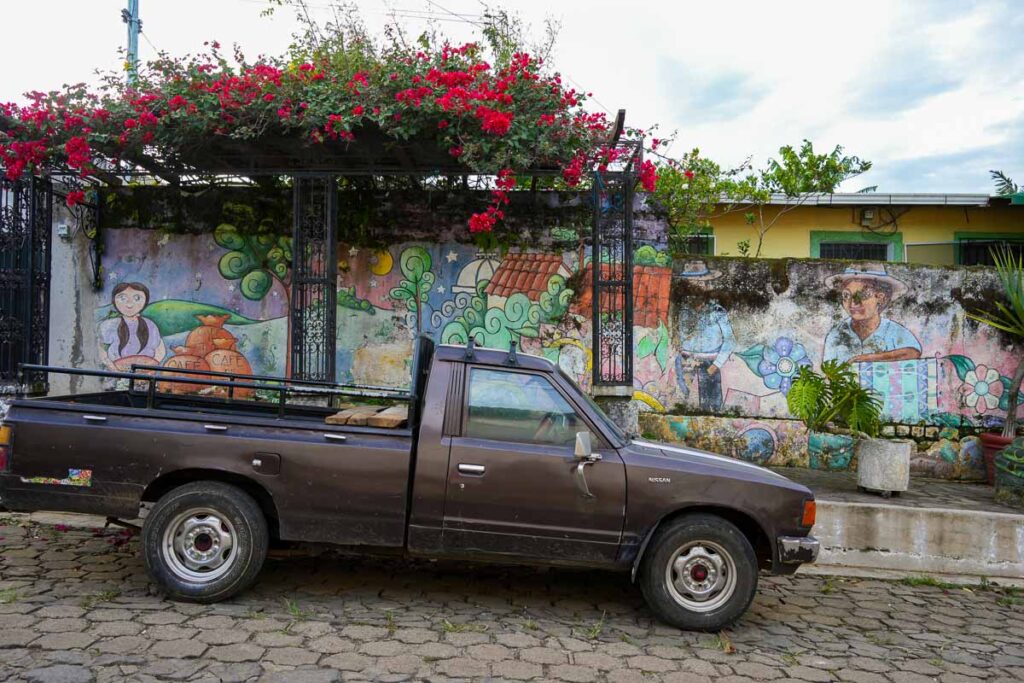

We stopped first at a café in the town of Ataco for a coffee and chocobanana. (It’s exactly what it sounds like, and the best invention ever: A frozen banana dipped in chocolate. You’ll see them for sale all over Central America.)
I immediately noticed that the chocobanana came on a real, wooden stick, and the coffee and water were served in real cups and glasses. So after we finished, I mentioned it to the server, and he immediately had lots to share about plastic and garbage in his town.

He said that his boss in the coffee shop used to put large trash bins outside the shop to collect as much as possible (you’ll notice that otherwise, there really aren’t many bins anywhere). But due to some kind of drama between the boss and the town mayor, they had been banned from dropping off their extra garbage at the town dump.
I started to feel even more strongly that coming here as a comparatively very wealthy tourist, to a place where small town drama can mean garbage doesn’t even get collected, and contributing to this problem in the name of “convenience” was just unacceptable.
Day 10: Beach clean-up & the blame game
We spent the last couple days of our trip relaxing at the beach, with the sounds of Pacific lulling us to sleep.
One of the beaches we visited was San Blas, a gorgeous, long black sand beach with shallow water (but strong waves).
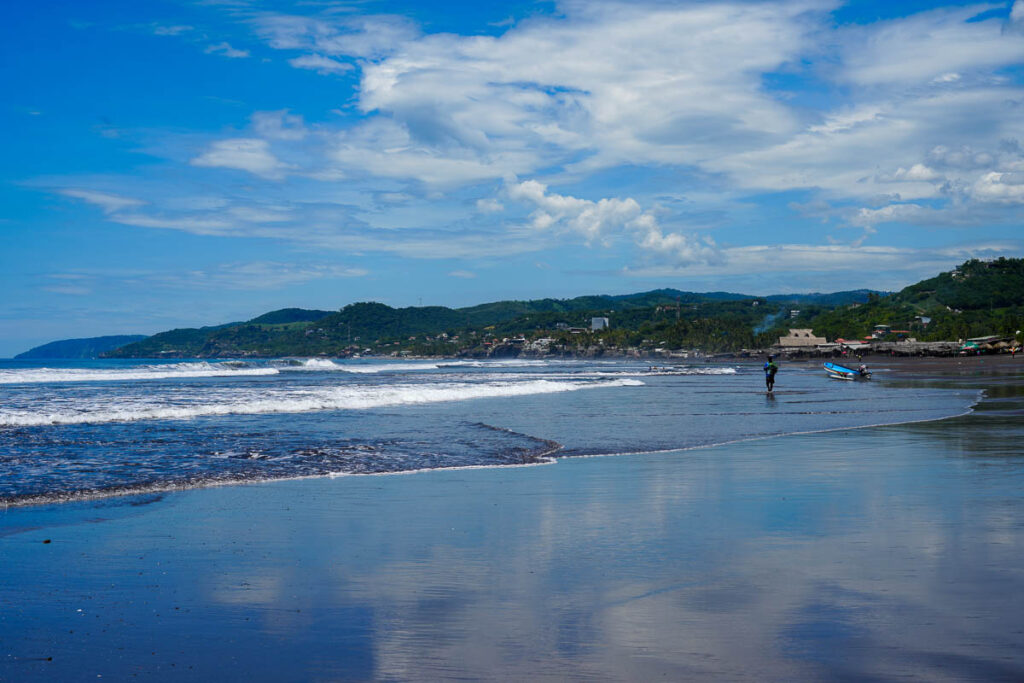
We saw a group of Salvadoran visitors collecting garbage from the beach, as part of a visit to a local sea turtle nursery. (Tortuguero San Blas – which offers local beach clean-ups and a chance to see baby sea turtles up close.)
It felt fantastic to see local people trying to do something about the plastic problem, but it’s hard not to get depressed when you see what they’re up against.
As soon as you go to an area of the beach that’s less visited, you see plastic absolutely everywhere you look. We picked up all the water bottles, straws, and toothpaste tubes we could carry.
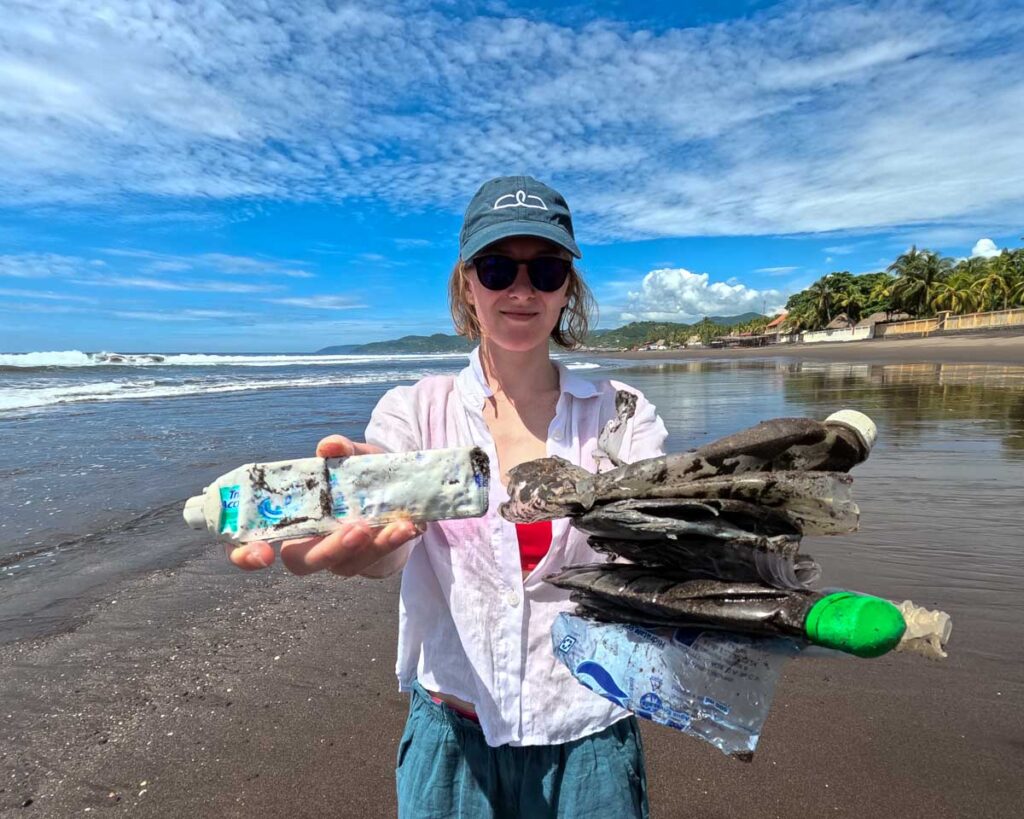
We also saw some signs on the beach that I think give the wrong idea about plastic pollution.
Educating people not to leave their trash on a beach is fine. Sure, it’s important.
But that’s not the majority of where the problem comes from. Trash washes up from other places, and is blown around by wind.
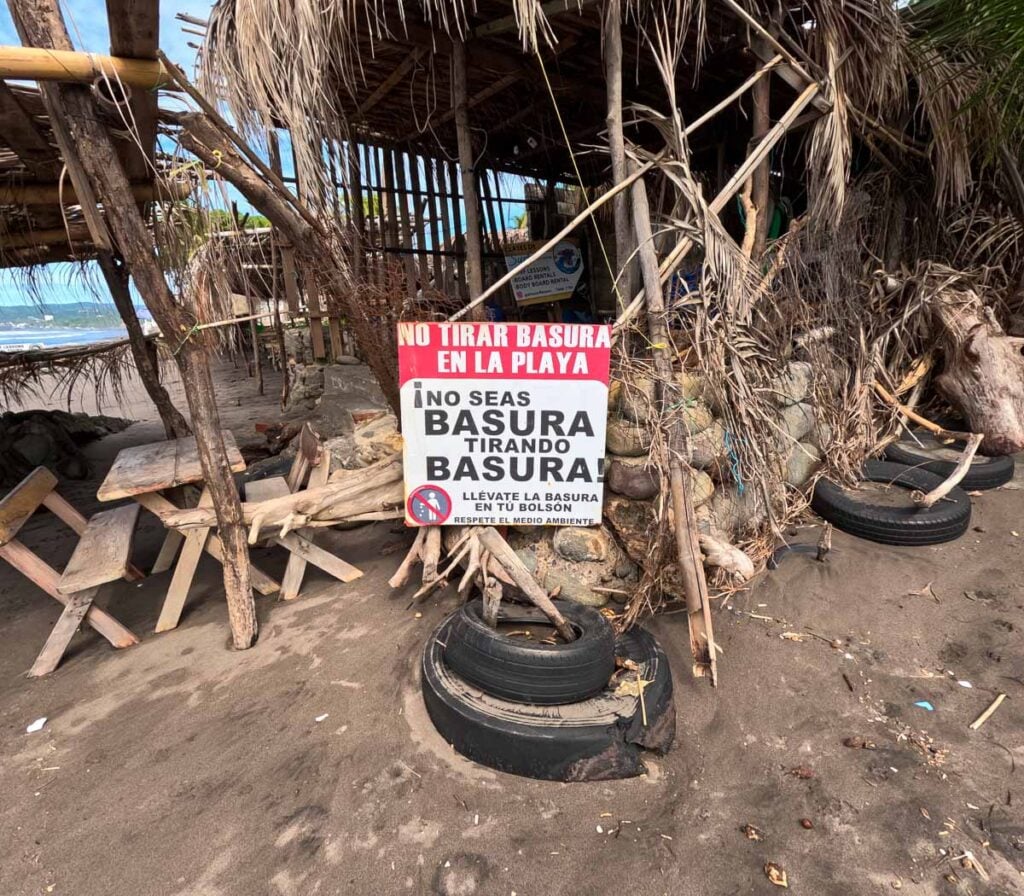
Many countries like El Salvador don’t have anything close to adequate waste management systems. That means there’s often no place to put your garbage, and when there is, it might not be collected.
Garbage trucks are often open on top (we saw them frequently) and wind blows trash out. The solution in rural communities is often to burn garbage. (We saw this happening in El Salvador, and have seen it before around Southeast Asia, too. You can smell the burning plastic, so it’s obvious when it’s not just yard trimmings.)
The landfills aren’t sanitary, modern landfills. (Usually just pits in the ground where trash is dumped, and the toxic chemicals that are in plastics leech out into the ground water.)
And recycling doesn’t exist. (But recycling isn’t the solution anyway. Turning off the “tap” of our single-use plastic habit is.)
Bottom Line:
After ten days in a country where travelers definitely can’t drink the tap water without expecting to get sick, I’m absolutely thrilled to report that we managed to do just that!
And while I saw a lot of sad and frustrating proof of the lack of education around plastic pollution, and the lack of resources to deal with the problem, I also saw small sparks of change.
We told lots of locals about the water filtering and UV system we were using, often pulling out the LARQ and Grayl bottles to show them. And everyone we talked to was absolutely thrilled.
It’s clear that there’s so much enthusiasm for change, but right now there just aren’t economies in Central American that will allow these sustainable “travel gadgets” to be accessible to locals. (In El Salvador, for example, the minimum wage is less than $400 a month.)
And that’s why it’s on us travelers to do better.
Coming from a place where we can afford to fly to another country for fun, and claiming we can’t afford to buy the equipment to not make a mess once we get there (or, even worse, can’t be bothered by the so-called “inconvenience”) is an attitude I’m finding less and less excusable. Especially after we tested a solution on our own stomachs, and it passed with flying colors!
For now, I’ll keep strongly recommending this two-bottle water purification system for travelers.
I’ve looked into several other solutions, but the Grayl to filter, followed by the LARQ to kill any remaining bacteria is still what I’ll use and recommend. Technically, either one should be enough on its own, and I’ve read accounts from long-term travelers who’ve used both, separately, without issue.

But if you don’t want to take a risk, this is the safest route. The peace of mind, and avoiding that stressful feeling that maybe you’re about to get sick is worth a lot. That’s why I did this test for you!
If you’re interested in learning more about other UV-C and filter travel water bottle alternatives, and why exactly I chose this option, sign up for my newsletter to stay tuned for my detailed review with all the nuts and bolts!
Questions about plastic pollution, or drinking tap water when you travel? Leave them below in the comments and I’ll get back to you!
[Related: Don’t forget to check out my review of the Tortuga travel backpack if you’re planning a trip to Central America! I definitely wouldn’t recommend moving around the region with a wheeled suitcase.]


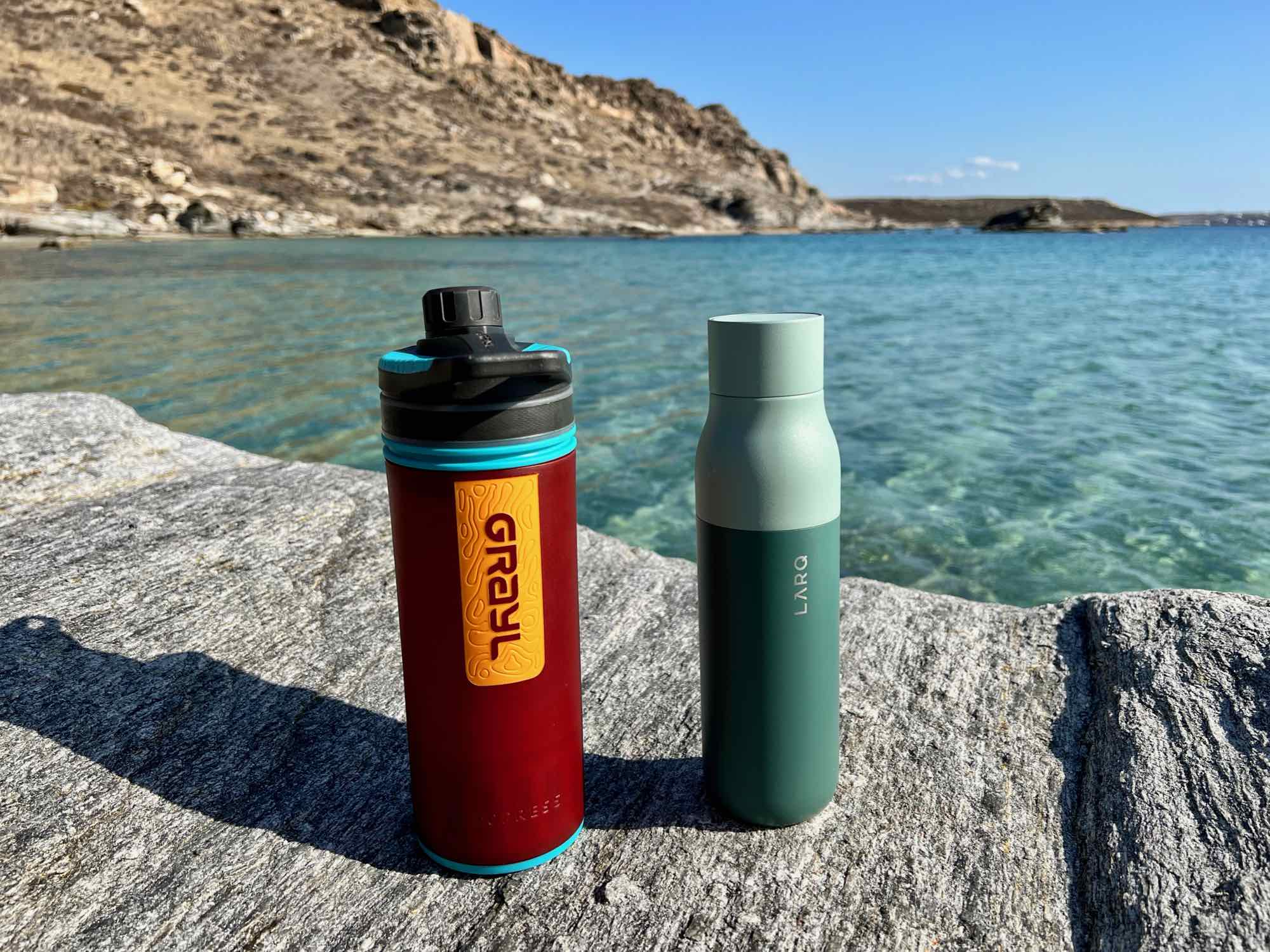
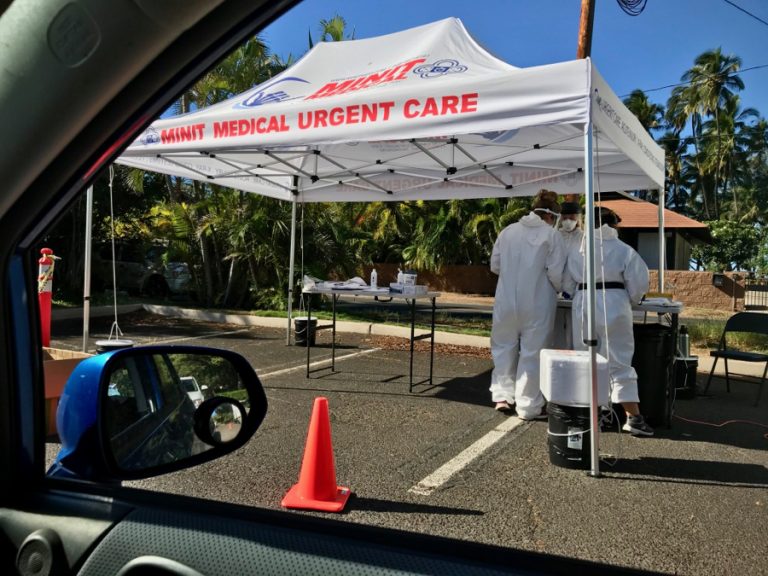


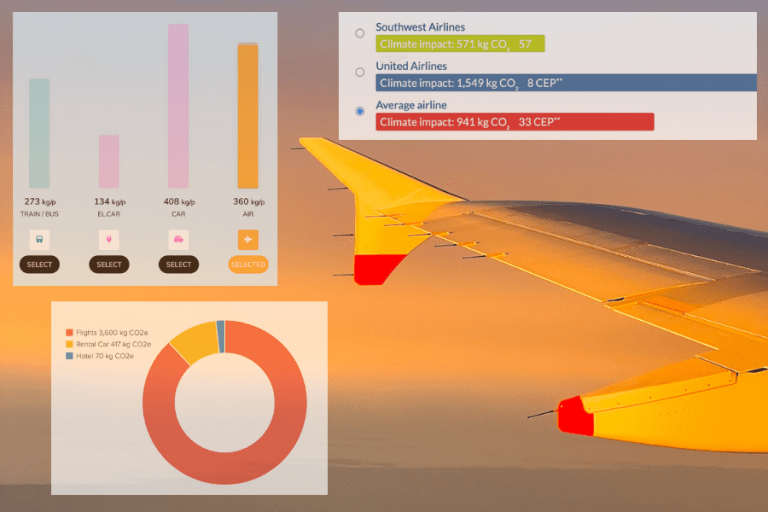


Could I please be unsubscribed? This is not really relevant to my needs or interests (other than sustainability)!
Thanks, Lynne
Hi Lynne,
I completely understand. If you go into any email that I send, at the very bottom you’ll see a link a to unsubscribe, or to “manage preferences,” which lets you switch to only receive my sustainability-related emails (no travel). I’ll go ahead and change that for you, and if you ever want to change back or unsubscribe entirely, you know where to do it.
Hope that helps and have a good one!
– Ketti